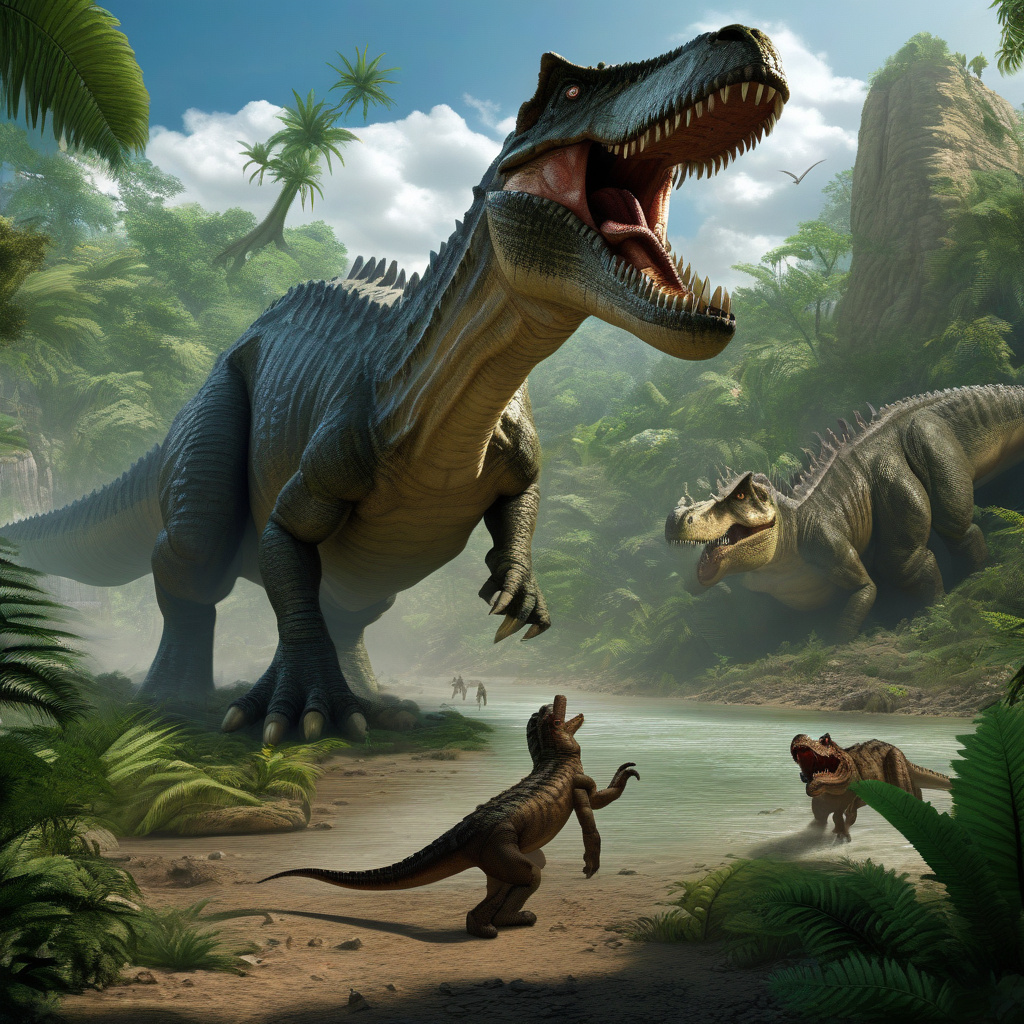Terror Crocodiles’ Feasted on Dinosaurs 75 Million Years Ago: Study Unveils the Secrets
Scientists claim to have cracked the code that led to a massive prehistoric reptile known as the Deinosuchus, aptly nicknamed the “terror crocodile,” dominating the waters 75 million years ago. These ancient predators, believed to have grown up to 33 feet in length, roamed the rivers and coastal regions, preying on dinosaurs that dared to quench their thirst in the water bodies. The study sheds light on how these colossal creatures were able to thrive and become apex predators during the Late Cretaceous period.
The research, recently published in the Journal of Vertebrate Paleontology, reveals intriguing insights into the lifestyle and feeding habits of the Deinosuchus. By analyzing bite marks found on dinosaur fossils unearthed in the eastern United States, scientists were able to piece together the feeding behavior of these terrifying crocodiles. The tell-tale signs left behind on the bones indicate that the Deinosuchus was an opportunistic hunter, ambushing dinosaurs as they approached the water’s edge.
What sets the Deinosuchus apart from its modern-day relatives, such as the American alligator, is its sheer size and formidable bite force. With its massive skull and robust jaws lined with large, sharp teeth, this prehistoric crocodile was well-equipped to take down even the largest of dinosaurs. The study suggests that the Deinosuchus may have employed a “sit-and-wait” hunting strategy, lurking beneath the surface and launching a sudden, deadly attack on unsuspecting prey.
The discovery of these ancient feeding behaviors not only adds to our understanding of the Deinosuchus but also paints a vivid picture of the ecosystem it inhabited. During the Late Cretaceous period, North America was a thriving landscape teeming with a diverse array of dinosaurs, reptiles, and other prehistoric creatures. The presence of apex predators like the Deinosuchus would have had a significant impact on the dynamics of the food chain, shaping the evolution of species in the region.
While the reign of the Deinosuchus came to an end with the mass extinction event that wiped out the dinosaurs 66 million years ago, its legacy lives on through the fossil record. By piecing together clues from the past, scientists are able to reconstruct ancient ecosystems and gain valuable insights into the behaviors of long-extinct creatures. The study of prehistoric predators like the Deinosuchus not only fascinates researchers but also captivates the imagination of the public, offering a glimpse into a world ruled by giant reptiles and towering dinosaurs.
As we unravel the mysteries of the prehistoric world, each new discovery brings us closer to understanding the complex web of life that existed millions of years ago. The study of the Deinosuchus serves as a reminder of the power and adaptability of ancient creatures, showcasing their ability to thrive in environments vastly different from those we know today. By delving into the secrets of these “terror crocodiles,” scientists are able to paint a more complete picture of Earth’s distant past, offering a glimpse into a world where giants once roamed the land and sea.
In conclusion, the study of the Deinosuchus offers a fascinating glimpse into the lives of prehistoric predators and their interactions with other ancient species. By unraveling the mysteries of these “terror crocodiles,” scientists are able to piece together the puzzle of the past, shedding light on a bygone era when dinosaurs ruled the Earth.
#Deinosuchus, #PrehistoricPredators, #Dinosaurs, #AncientEcosystems, #FossilRecord












